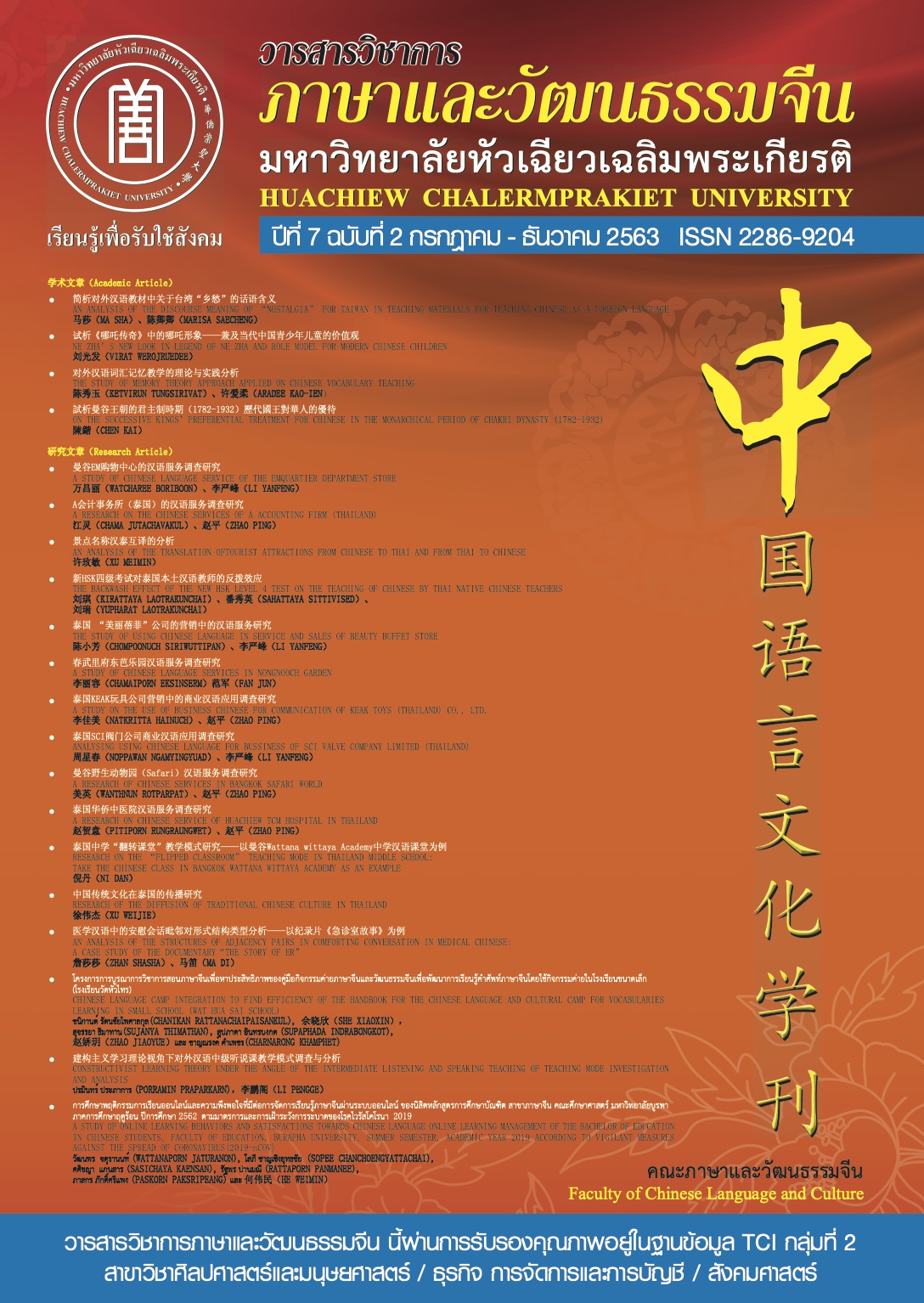NE ZHA’S NEW LOOK IN LEGEND OF NE ZHA AND ROLE MODEL FOR MODERN CHINESE CHILDREN
Keywords:
Legend of Ne Zha, Ne Zha, Chinese children’s and adolescents’ valuesAbstract
The purpose of this paper is to find out and discuss children’s and adolescents’ values and national spirit of the Chinese Communist Party in the Legend of Ne Zha. Firstly, collect Chinese traditional and modern values and national spirit for children; and then, explain the values and national spirit of Chinese children from all of 52 episodes. The research found that the values and national spirit of Chinese children are still not clear between the 1st episode and the 26th episode. After the 27th episode, they; gradually, are clearer and can be divided into two values: The First one, socialism and Marxism, three of which are the relationship between youth and friendship, the sacrifice for the people and the sacrifice of the minority for the majority, the views of the People’s Republic of China on feudal society; the second one, Chinese traditional culture, four of which are the adult-oriented and the relationship between “belief” and “loyalty”, the relationship between “child” and “filial piety”, modesty, doing good to the good; doing bad to the bad, and sense of responsibility. Because Legend of Ne Zha was also transformed from which the original tale, concealing the values of modern children and adolescents: Based on the traditional values of Chinese tradition, decorated with the values of socialism and Marxism.
References
Bly, Robert.(2015).Iron John: A Book about Men.(3rd ed.).Boston: Da Capo Press. Grimm, Jacob and Wilhelm.(1954).Hansel and Gretel (A Little Golden Book). Racine: Western Publishing.
Grimm, Jacob and Wilhelm.(1993).Iron Hans.New York: Viking Juvenile.
Zipes, Jack.(1994).Fairy Tale as Myth/Myth as Fairy Tale.Lexington: University Press of Kentucky.
于婷婷.(无法表年份).1957年11月17日 毛主席说:“世界是你们的,也是我们的,但是归根结底是你们的。”2018年6月6日,http://cpc.people.com.cn/GB/64162/64165/72301/72320/5047765.html检索.
毛泽东著.(1952).中国革命和中国共产党.北京:人民出版社.
北京娱乐信报(2003).吒六一闹荧屏 动画片《哪吒传奇》将播出(图).2018年6月11日,从http://ent.sina.com.cn/v/2003-05-25/1027151284.html检索.
央视国际.(2004)《哪吒传奇》等在2004中国国际卡通作品评选中获奖.2018年6月9日,从http://www.cctv.com/program/dhc/20041110/100287.shtml检索.
刘宝楠撰, 高流水点校.(1990).论语正义.北京:中华书局.
刘晓东.(1994).中国传统文化中的儿童观及其现代化.学前教育研究.4(3).8-11.
李文炤撰, 赵载光校点.(2012)周礼集传.长沙:岳麓书社.
张雪洋.(2014)代表委员谈社会主义核心价值观 24字将13亿人黏合成强大整体.2018年8月2日,从http://news.12371.cn/2014/03/09/ARTI1394321858563964.shtml检索.
陈来.(2015).中华传统文化与核心价值观.2018年8月4日,从http://dangjian.people.com.cn/n/2015/0316/c117092-26698780.html检索.
逃逃.(2008)第五届金鹰节暨第22届电视金鹰奖获奖名单.2018年6月9日,从http://yule.sohu.com/20080820/n259061872.shtml检索.
谢磊.(2016).习近平:以中华优秀传统文化涵养社会主义核心价值观.2018年8月5日,
从http://theory.people.com.cn/n1/2017/0609/c40531-29328920.html检索.
新华网.(2013).困惑孩子如何“学雷锋”?大人犯难. 2018年8月2日,
从 http://www.xinhuanet.com/edu/2008-03/03/content_7709099.htm检索.
新华网.(2017).习近平提出,坚定文化自信,推动社会主义文化繁荣兴盛.2018年6月5日,
从 http://www.xinhuanet.com/politics/201710/18/c_1121820800.htm检索.
Downloads
Published
How to Cite
Issue
Section
License
บทความที่ได้รับการตีพิมพ์เป็นลิขสิทธิ์ของวารสารภาษาและวัฒนธรรมจีน มหาวิทยาลัยหัวเฉียวเฉลิมพระเกียรติ
บทความใน “วารสารวิชาการภาษาและวัฒนธรรมจีน” เป็นทรรศนะของผู้เขียนโดยเฉพาะ กองบรรณาธิการไม่มีส่วนในความคิดเห็นในข้อเขียนเหล่านั้น




